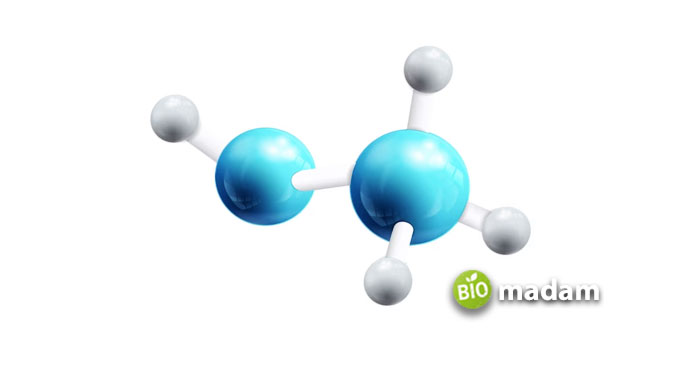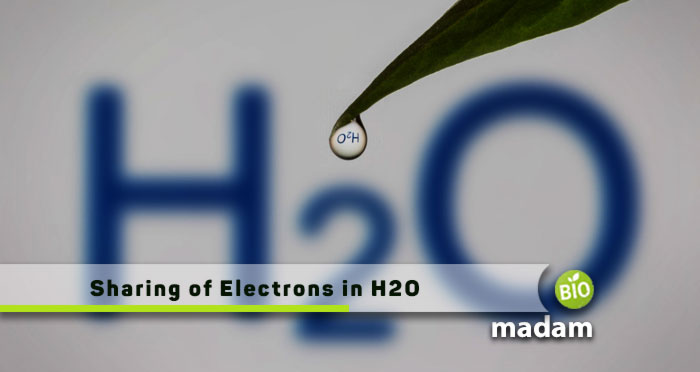The world of chemistry is so vast, there is so much to explore and understand. The most basic yet important concept in chemistry is chemical bonding. It is the interaction of atoms, molecules, compounds, and ions to form compounds. These bonds give stability to the chemical compounds. When two matters interact, they exert certain forces on one another that can be repulsive or attractive. The attractive forces that hold the molecules or atoms together are called chemical bonds.
There are different types of chemical bonds including, ionic bonds, covalent bonds, polar bonds, and hydrogen bonds. These bonds differ on the factors such as whether they lose, gain, or share electrons. Let’s dive into the depth of hydrogen bonds and explore whether they share electrons or not.
What are Hydrogen Bonds?
Hydrogen bonds refer to the bonds that are formed as a result of hydrogen bonding. Hydrogen bonding is a special type of dipole-dipole interaction that exists between a hydrogen atom that is bonded to an electronegative atom and another highly electronegative atom that is present in the vicinity of the hydrogen atom. Such bonds are stronger than van der Waals forces but weaker than covalent or ionic bonds.
Do Hydrogen Bonds Share Electrons?
Hydrogen bonds share electrons but this sharing is not even. Electrons are shared unevenly between a hydrogen atom and a negatively charged atom. Hydrogen has a weak positive charge as it has only one electron and takes two electrons for a stable electron pair. Due to the presence of the positive charge, it remains attracted to atoms carrying a negative charge. Compounds with polar covalent bonds are capable of forming hydrogen bonds.
Types of Hydrogen Bonds
There are two types of hydrogen bonding present as described here:
Intramolecular Hydrogen Bonds
Intramolecular hydrogen bonding exists between a single molecule. In such bonding, the hydrogen donor and acceptor both are present in one molecule. For a hydrogen bond to form, both species must lie close to one another. Example of such bonding includes the bonding between ethylene glycol molecules.
Intermolecular Hydrogen Bonds
Intermolecular hydrogen bonding exists between two different molecules in the same or different compounds. Examples of intermolecular hydrogen bonding include bonding in alcohol, water, or ammonia.
Examples of Hydrogen Bonds

Following are some common examples of hydrogen bonding:
- Hydrogen bonding between hydrogen fluoride: Fluorine is highly electronegative and forms the strongest hydrogen bonds with hydrogen.
- Hydrogen bonding in water: In a water molecule, oxygen is electronegative and attracts hydrogen atoms. The oxygen end of the molecule becomes negative and the hydrogen end becomes positive in this case.
- Hydrogen bonding in ammonia: It contains highly electronegative nitrogen atoms that form H-bonds with hydrogen.
- Hydrogen bonding in alcohols and carboxylic acids: Alcohols contain OH groups and thus they can easily form hydrogen bonds with either oxygen or nitrogen.
- Hydrogen bonding in polymers: H-bonds also exist in complex 3D structures of proteins and cellulose etc.
Properties of Hydrogen Bonds
The following are some common properties found in compounds with hydrogen bonds:
- They have high melting and boiling points which make them less volatile.
- Due to the presence of an H-bond between alcohols and water, lower alcohols are soluble in water.
- They have high surface tension and viscosity.
- H-bonding causes a lower density of ice than water. Due to these bonds water molecules form a cage-like structure when they form solid ice. In such a structure, each water molecule is bonded to four water molecules tetrahedrally. So, when the ice melts, water molecules come close to each other and their volume increases but their density decreases.
Conclusion
Compounds are formed by the interaction between different atoms and molecules. These atoms form chemical bonds with each other to form compounds. Different types of bonds exist between chemical compounds, including ionic, covalent, metallic, and hydrogen bonds. Hydrogen bonds share electrons unequally. They are formed by the interaction between hydrogen and an electronegative atom or any other highly electronegative atom that lies in the close vicinity of the hydrogen atom. These bonds are stronger than van der Waal forces but weaker than covalent and ionic bonds. There are two types of hydrogen bonding, intermolecular and intramolecular hydrogen bonding. Intermolecular exists between two different molecules whereas intramolecular exists between a single molecule.
Frequently Asked Questions (FAQs)
Here are some frequently asked questions about hydrogen bonding:
Why is a hydrogen bond weaker than a covalent one?
Hydrogen bonds are weaker than covalent bonds because in hydrogen bonding there is no direct sharing of electrons as there is in covalent bonding.
Do hydrogen bonds only occur in water?
Hydrogen bonds do not only occur in water. They are also present in polar molecules containing an H−N, H−O, or H−F bond.
Why is hydrogen bonding special?
Hydrogen bonds are special as they are present in inorganic molecules, such as water, and organic molecules, such as DNA and proteins.
Do hydrogen bonds need energy?
Hydrogen bonds have energies between 1 and 40 kcal/mol. It depends on the environment, geometry, and nature of the donor and acceptor. This energy makes hydrogen bonds weaker than ionic and covalent bonds and stronger than van der Waals interaction.

Hello, I would like to introduce myself to you! I am Chelsea Rogers, an experienced blog writer for science articles, holding an MPhil degree. My enthusiasm to grab the best knowledge, let it relate to botany, zoology, or any other science branch. Read my articles & let me wait for your words s in the comment section.

